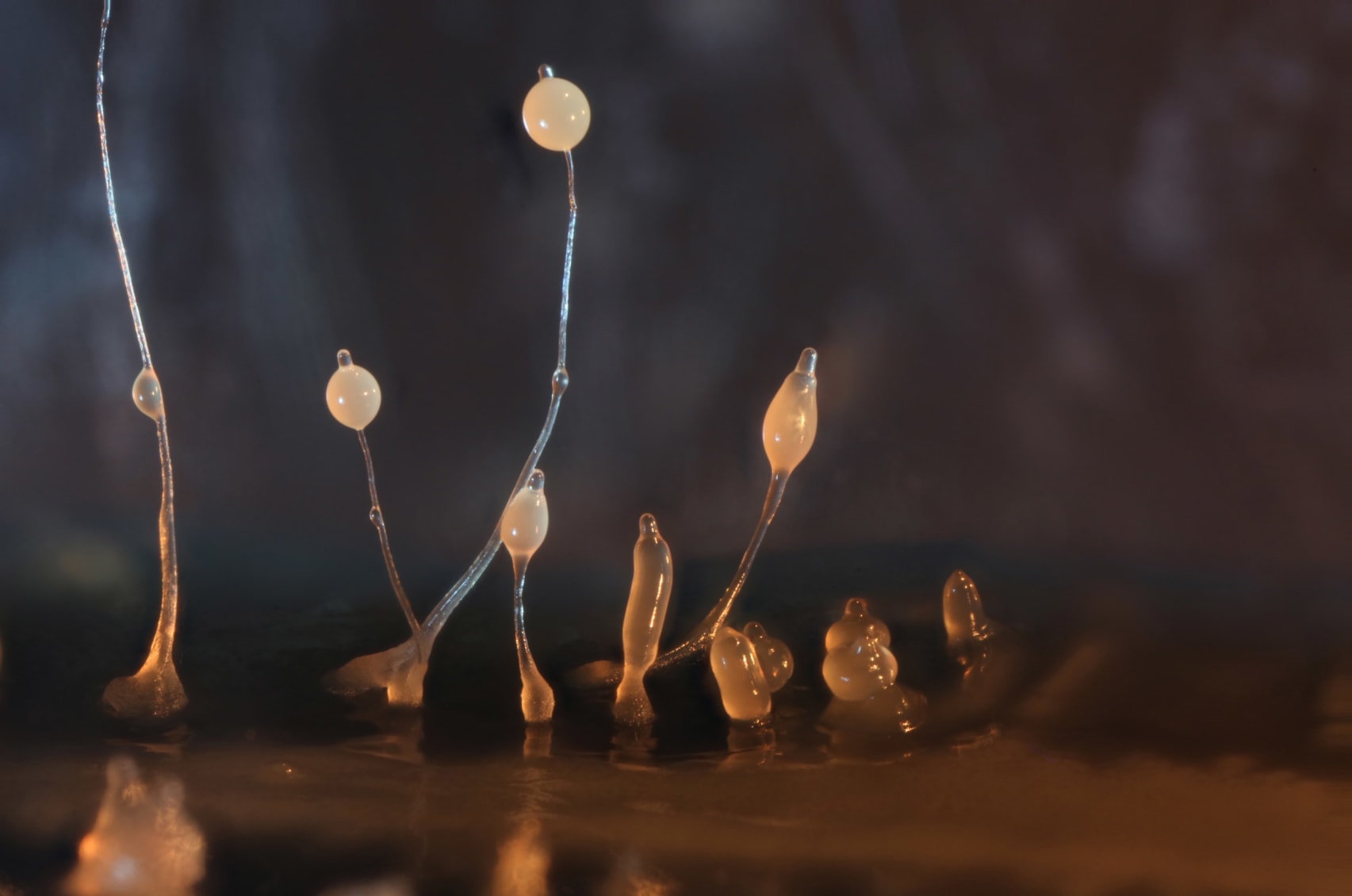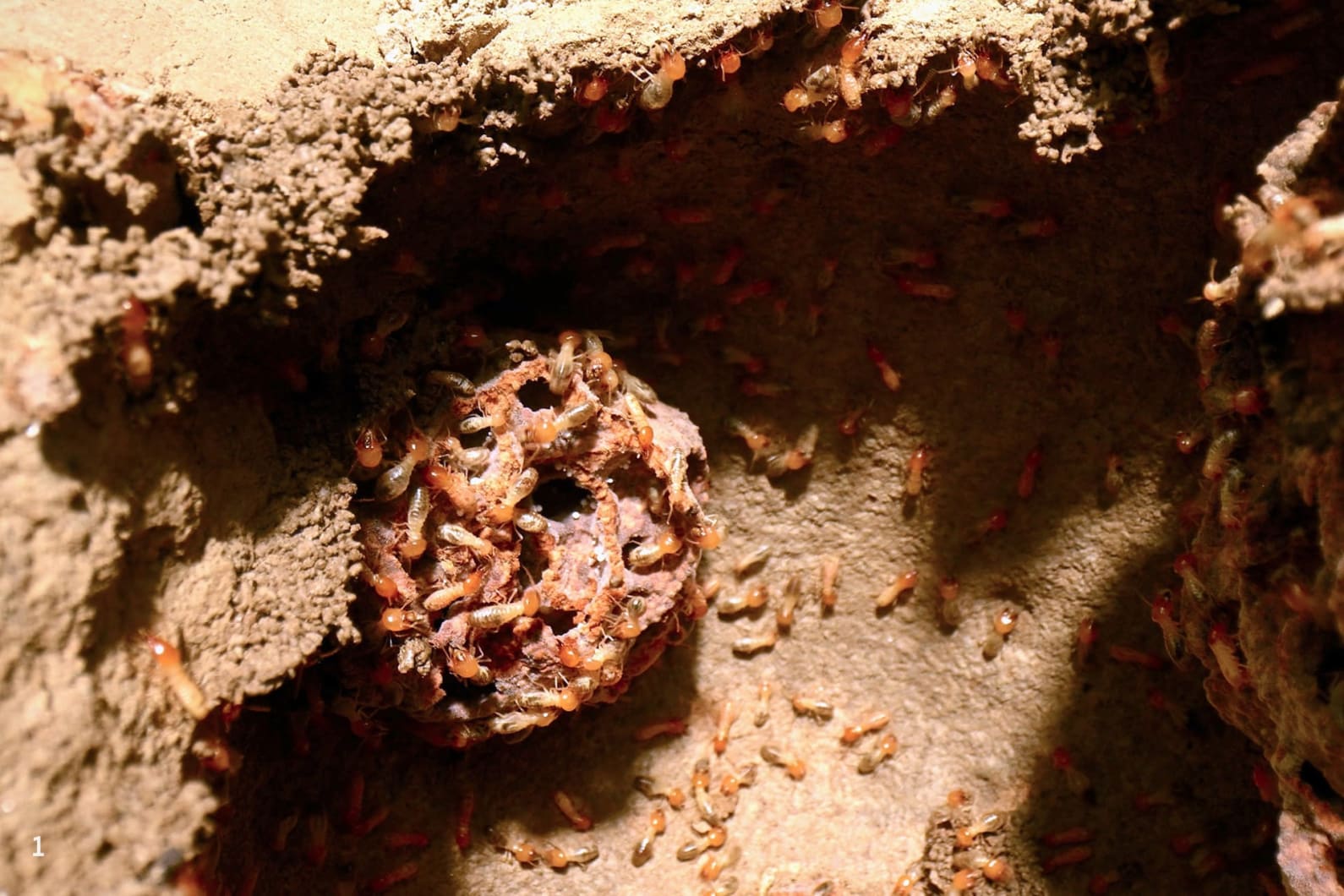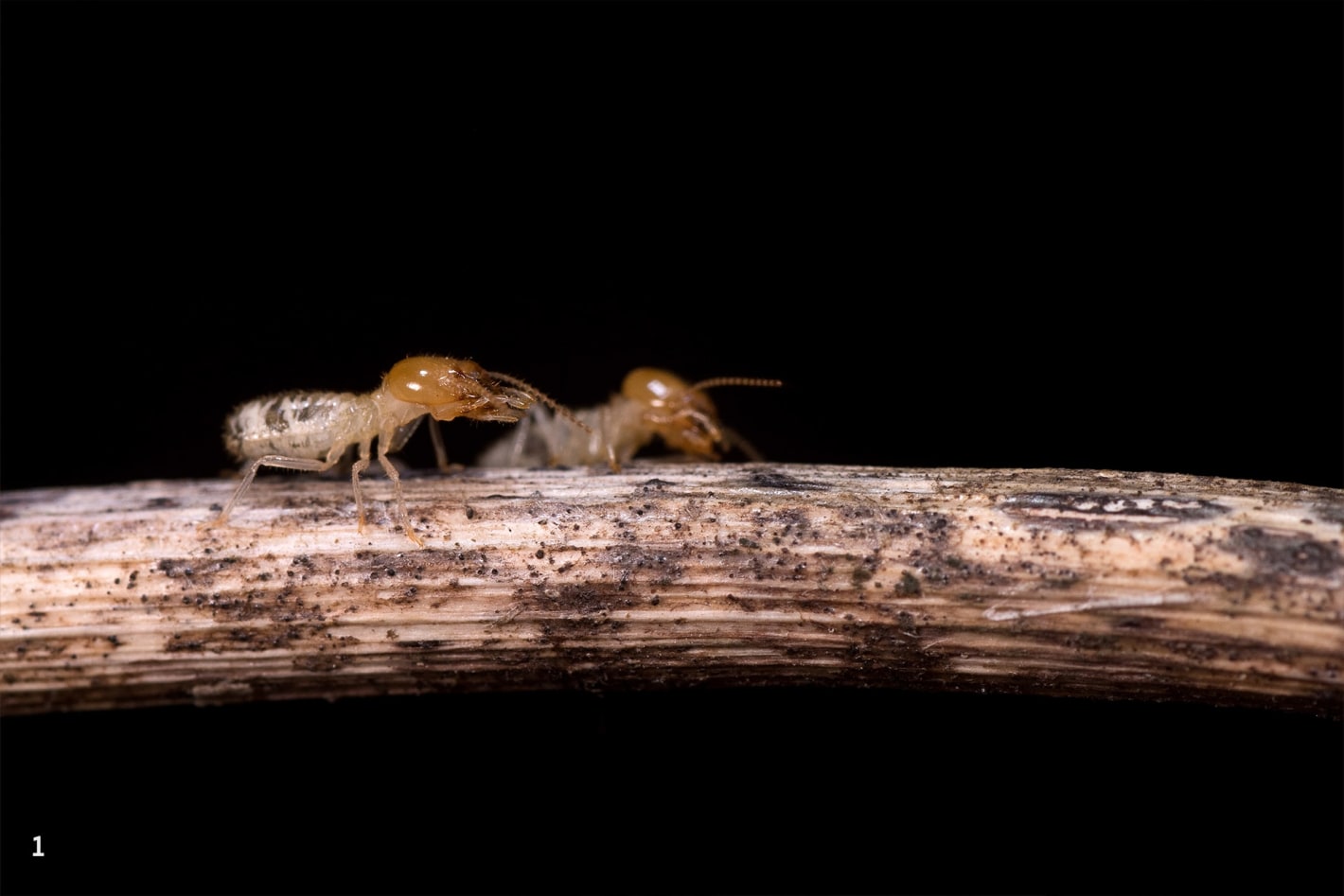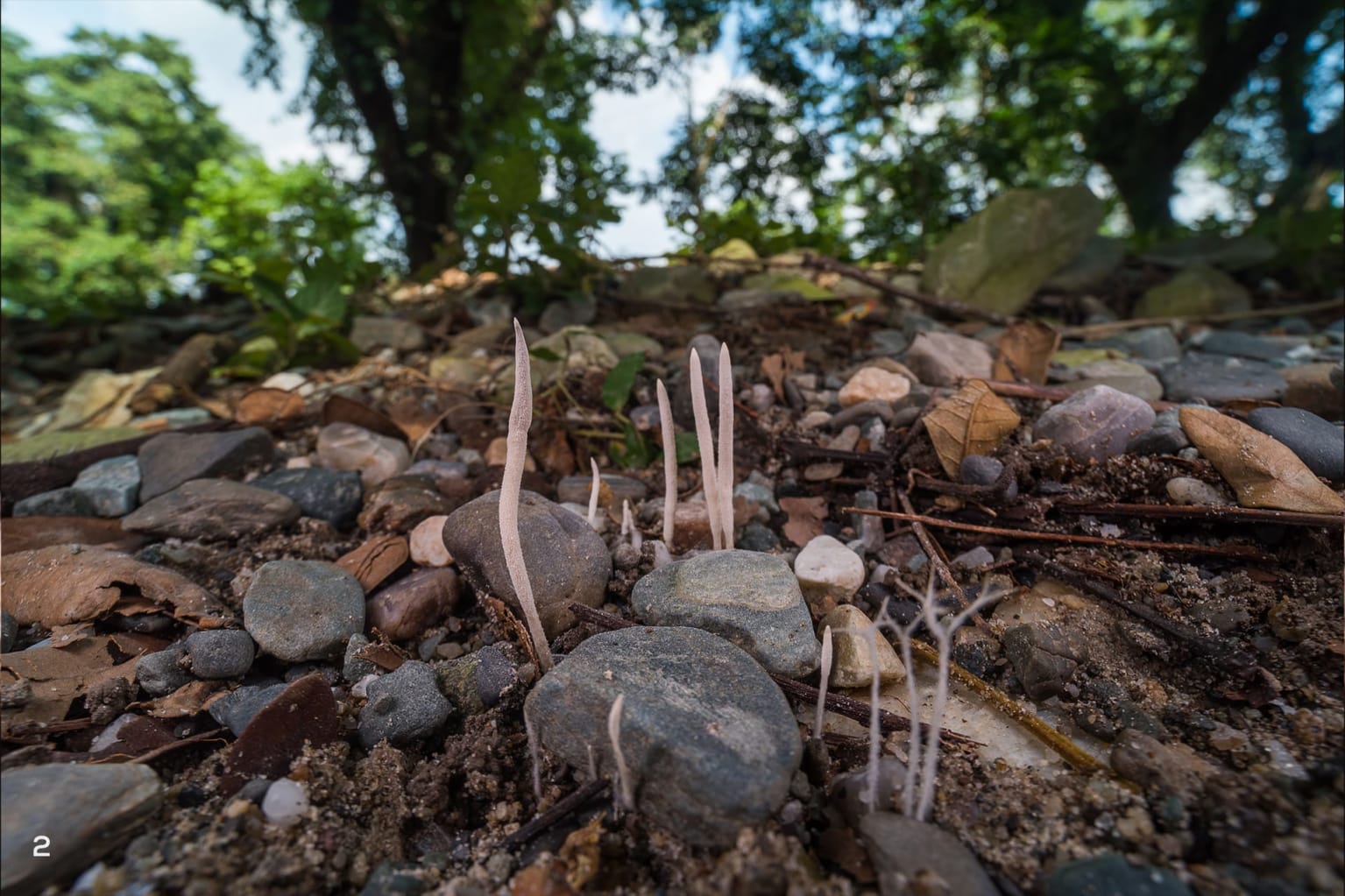 Listen to this article
•
15:34 min
Listen to this article
•
15:34 min
We humans think of agriculture as the hallmark of civilisation — a practice that has transformed our societies over hundreds of years. But if we look closely at the natural world, many non-humans practice the art of cultivating food. Behaviours such as sowing, tending, weeding, harvesting, and even herding are seen in many organisms in hidden corners of nature.
Whether within the humid darkness of underground tunnels, on the stems and leaves of plants, among the vibrant colours of coral reefs, or in microscopic patches of soil, humans are not alone in farming.

Underground crops: fungus farming in the dark
Termites, those pests we associate with crumbling wardrobes, are not all wood-destroying vermin. Some termites are farmers.
Termites from the family Macrotermitinae cultivate fungi of different Termitomyces species in a form of underground agriculture that is as astonishing as it is ancient. Fossil evidence indicates that termites were growing “fungus gardens” 25 million years ago, in one of the oldest examples of an agricultural system; humans only began farming about 12,000 years ago.
Termites may be tiny, but they are mighty builders constructing vast, complex mounds with intricate tunnel networks. These mud palaces are amazingly effective at maintaining nearly constant humidity levels and temperatures, which help termites grow their fungal crops. In India, termite species such as Odontotermes obesus build mounds up to six feet high, which often shelter other animals such as snakes and lizards.
Fungal gardens are in the heart of the termite mounds and are meticulously tended by the colony. Termites harvest leaves and plant material from the surface, chew it up, and deposit it into underground chambers in their mounds as a growth medium for the fungi. The fungi grow on this organic matter and produce “spherules or mycotetes”, which are highly digestible protein- and nutrient-rich sacs for the termites to eat. The spherules also contain fungal spores, which allow the termites to use their own poop as a source of seed and fertiliser to start new fungal gardens.
Like all farmers, the termites’ fungal gardens are not pest-free. Weedy fungi such as Pseudoxylaria can sometimes overrun the termites’ crop of Termitomyces fungi. However, the termites keep these weeds at bay by burying the offending fungi and using weed-whacking chemicals (produced by the bacteria in their guts) to keep their fungus gardens thriving.
Attine ants or leafcutter ants in Central and South America, have similar fungal cultivation systems. These systems depend on a three-way relationship between the ants, the fungi they farm, and special bacteria growing on the ants that produce “weedicides” to protect the fungal crop from black yeast infestations.
Other fungus farmers
Apart from termites, other organisms also engage in a strikingly similar form of agriculture and tend fungus gardens. Ambrosia beetles typically bore into the trunks of trees weakened by environmental or biological stress. They create networks of sheltered galleries lined with ambrosia fungi within the wood, which they use to feed themselves and their brood. The beetles farm the fungi for nourishment, and, much like termites, carefully manage their fungal gardens by “cropping” weeds, using antibiotics, and propagating specific strains of fungi. In addition, the beetles also carefully choose where they situate their gardens, preferring wood containing 1–2 per cent ethanol as the alcohol helps keep weedy fungi at bay.
Currently, two species of ambrosia beetles, Xylosandrus crassiusculus (Asian ambrosia beetle) and Euplatypus paralellus (common ambrosia beetle), are emerging as pests in cashew, rambutan, and rubber plantations in India. In Kerala and Karnataka, these two species have even begun attacking areca nut plantations. In a strange turn of events, these beetles may also cause vehicle fires in Kerala. The use of ethanol-blended petrol seems to attract these beetles, which bore holes in vehicle fuel pipes, causing leaks and fires.
Underwater gardens: life in the blue depths
If you think underground gardens are strange, what would you think of underwater agriculture? Along the sunlit shallows of Lakshadweep’s coral reefs, brightly coloured finned farmers practice “algaculture”. The small but territorial damselfish living in these reefs tend to patches of their favourite food, a red alga called Polysiphinia. Since other less palatable algae often overgrow these red algae, the damselfish selectively weed out unwanted algae. The fish also aggressively protect their algae patches from other herbivores and fertilise the algal patches. One study has reported that the damselfish even trade services with flocks of tiny shrimps. The shrimps are allowed to stay on the damselfish’s algal patches and are protected from other predators; in return, the shrimp fertilise the patches and ensure their protectors have flourishing algal farms producing high-quality algae!
Along the Atlantic coast of North America, another strange form of underwater agriculture exists. Here, the marsh periwinkle (Littoraria irrorate), a marine snail, practices farming fungi. The snail browses on salt marsh cordgrass leaves to create wounds, a bit like a farmer ploughing a field to prepare it for sowing a crop. The injured leaves are then colonised by specific fungi, which the snails then harvest and eat. Along with their “ploughing” behaviour, the snails use their faecal pellets to fertilise their fungal gardens.

Cattle tending and maintaining herds
Mirroring human agricultural practices, non-human farming is not always about growing crops; sometimes, it is the strategic management of other resources. And much like humans who supplement growing plant crops with animal husbandry, some ants also maintain dairies of insects that provide them with liquid food. While humans tend cattle, goats, and sheep for milk and meat, ants raise sap-sucking livestock like aphids and scale insects.
One of the most common ants in India that maintain herds of aphids are Myrmecaria brunnea, commonly known as “hunchback ants” or “brown droptail ants” because of their distinctive down-curved abdomens. To the ants, aphids are essentially mobile, sugar-producing factories.
Ants protect aphids against predators and even transport them to new host plants; in return, the aphids produce honeydew, a sugary excretion that the ants harvest and consume. In some cases, if ants do not remove the sugary honeydew, aphids can even develop fungal infections. This partnership is so effective that some aphid colonies depend almost entirely on their ant “herders” to protect them from predators and even disease!
Some ants produce chemicals to subdue aphids and keep them from leaving their herds, while others have been observed to selectively breed their aphid herds by culling and eating specific types of aphids.

Farming at a microscopic scale: the world of slime moulds
Perhaps the most unexpected example of non-human agriculture comes from the realm of microscopic organisms. Slime moulds, long thought to be primitive or even non-animal, can “farm” bacteria in a unique way.
Mostly living as single-celled but social amoebae, the slime mould Dictyostelium discoideum forms sprawling networks through soil, wood, and leaf litter, where they hunt and feed on bacteria. When food becomes scarce, the amoebae gather to form spores and structures called fruiting bodies that help disperse the spores. Some slime moulds stop feeding early and include live cultures of their food bacteria into their fruiting bodies so that their spores can carry a starter culture of these bacteria when they disperse. This helps the slime moulds create new crops of bacteria wherever they land, thus ensuring food for the future!
Farming as a survival mechanism
In conclusion, agriculture seems to have evolved underground, above ground, and even underwater. The practice is, therefore, a survival mechanism that exists in vastly different life forms, from six-legged critters that tend fungal crops to no-legged moulds that carry seed packages of edible bacteria.
Photo sources: Myrmicaria brunnea, Dictyostelium discoideum








